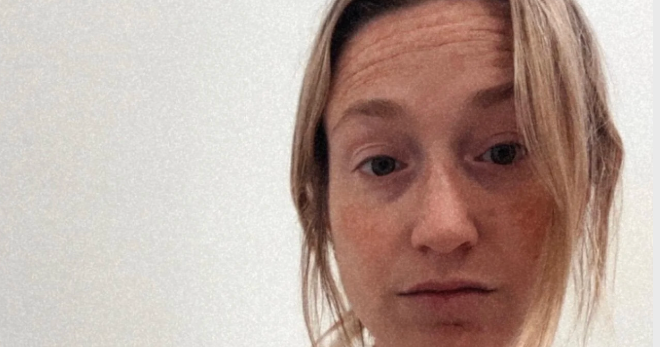An elderly woman’s x-ray revealed the bizarre treatment she had received decades earlier for the world’s deadliest disease.
The 86-year-old from Florida visited her doctor complaining of a burning pain in her chest and upper stomach, but she had no trouble breathing or any other respiratory issues.
While she was treated for acid reflux, a condition that causes stomach acid to back up into the esophagus, doctors also performed a chest x-ray, which showed a football-shaped cloudy mass in the upper left lobe of her chest.
The woman told doctors that in the 1950s, when she was in her early 20s, she had fallen ill with tuberculosis (TB), a respiratory condition dubbed the deadliest disease on the planet due to resistance to certain antibiotics and increased spread in developing countries that lack modern antibiotics.
Though a rare threat in the US today, at the time when the woman was treated, TB killed 20,000 Americans every year, and antibiotics for the condition were still new, leaving doctors reliant on experimental treatments.
At the time, the woman had received an oleothorax, a now obsolete procedure in which doctors would inject mineral oil into the area around the lungs, called the pleural space, to collapse a lung lobe.
Doctors typically used paraffin oil, which is derived from petroleum, or vegetable oil to deprive mycobacterium tuberculosis, the bacteria that causes TB, of oxygen and keep dormant TB from reactivating.
As modern antibiotics like isoniazid and ethionamide entered the market in the 1950s to treat TB, oleothorax slowly fell out of favor due to safety risks like infection, respiratory distress and pneumonia.

The above image shows an elderly woman’s x-ray in a 2017 case report. The cloudy area in her upper left chest lobe is from an oleothorax, a now obsolete procedure in which doctors would inject mineral oil into the space between the lungs to treat tuberculosis (TB)
In a video posted on X this week reacting to the resurfaced case report, which was originally published in 2017, Dr Sam Ghali, an emergency medicine physician at the University of Florida Health in Jacksonville who was not involved in the case, said: ‘This is an absolutely wild chest x-ray that you just don’t see every day.
‘When you think about this in 2025, it sounds absolutely crazy, but you have to imagine back then they didn’t have anything else.’
Today, TB infects a few thousands Americans every year and kills about 500, far fewer than cancer, heart disease and dementia. The threat is much more prevalent in developing countries, however, and TB kills 1.2million people worldwide each year.
TB in the US was on a steady decline from 1993 until 2020, when the overall number of cases hit an all-time low of 7,170. But in 2021, that number jumped to 7,866.
Prevalence has gone up every year since.
The latest CDC data shows the US provisionally recorded 10,347 TB cases in 2024 – up eight percent from the year before and the highest tally since 2011, when there were 10,471 cases.
Cases are now on the rise in 80 percent of US states, which experts have blamed missed cases and distrust of doctors forged by the Covid pandemic.
The demographics of TB have also shifted, starting in 2001. That was the first year the CDC reported more non-US born citizen patients than US-born, meaning immigrants and travelers were the driving force behind infections.


Pictured above are public health posters from the Work Projects Administration in the 1930s and ’40s on getting tested for tuberculosis
Prior to the introduction of antibiotics, patients receiving an oleothorax would typically have the oil removed after they recovered from TB, though some patients, like the woman in the case report, lived with it for decades.
Dr Ghali said: ‘The routine was that you would come back after a couple of years and get this removed, but a lot of patients, including our patient here, would just get lost to follow-up because they would never go back.’
Doctors in the late 19th and early 20th centuries typically recommended fresh air and rest to alleviate symptoms, typically in sanatoriums established specifically for TB patients.
In the early 1900s, Adirondack chairs were evented with wide armrests, tall slatted backs and higher seats in the front for patients in TB sanatoriums, as they were thought to help hold up patients’ chests and help them get more fresh air, but they did not produce clinical benefits.
TB spreads through airborne droplets that are released into the air when a person with active TB coughs, sneezes or speaks.
In the early stages, symptoms include a persistent and unexplained cough, sometimes coughing up blood or chest pain. Patients may also suffer from unexplained weight loss, loss of appetite, fever and night sweats.
In later stages, patients may have severe breathing difficulties and extensive lung damage, and the infection may spread to other organs or the back, causing pain.
Deaths are most often due to respiratory failure caused by bacterial damage to the lungs.
Tuberculosis can be prevented with the Bacillus Calmette-Guerin (BCG) vaccine. Though, due to the generally low risk, it is not routinely offered in the US – except for to children regularly exposed to people with active TB or healthcare workers in areas with increased spread.
The woman in the case report had no complications from the oleothorax or TB.
Dr Ghali said: ‘The human body is so amazing that she has adapted and lived with this for like 60 or 70 years, and this was just an incidental finding.
‘It’s just such a powerful testament to the fact that medicine is hard… you’ve got to do the best with what you have to help people, and it’s just so amazing how far we’ve come in medicine in just 75 years.’
Source link


